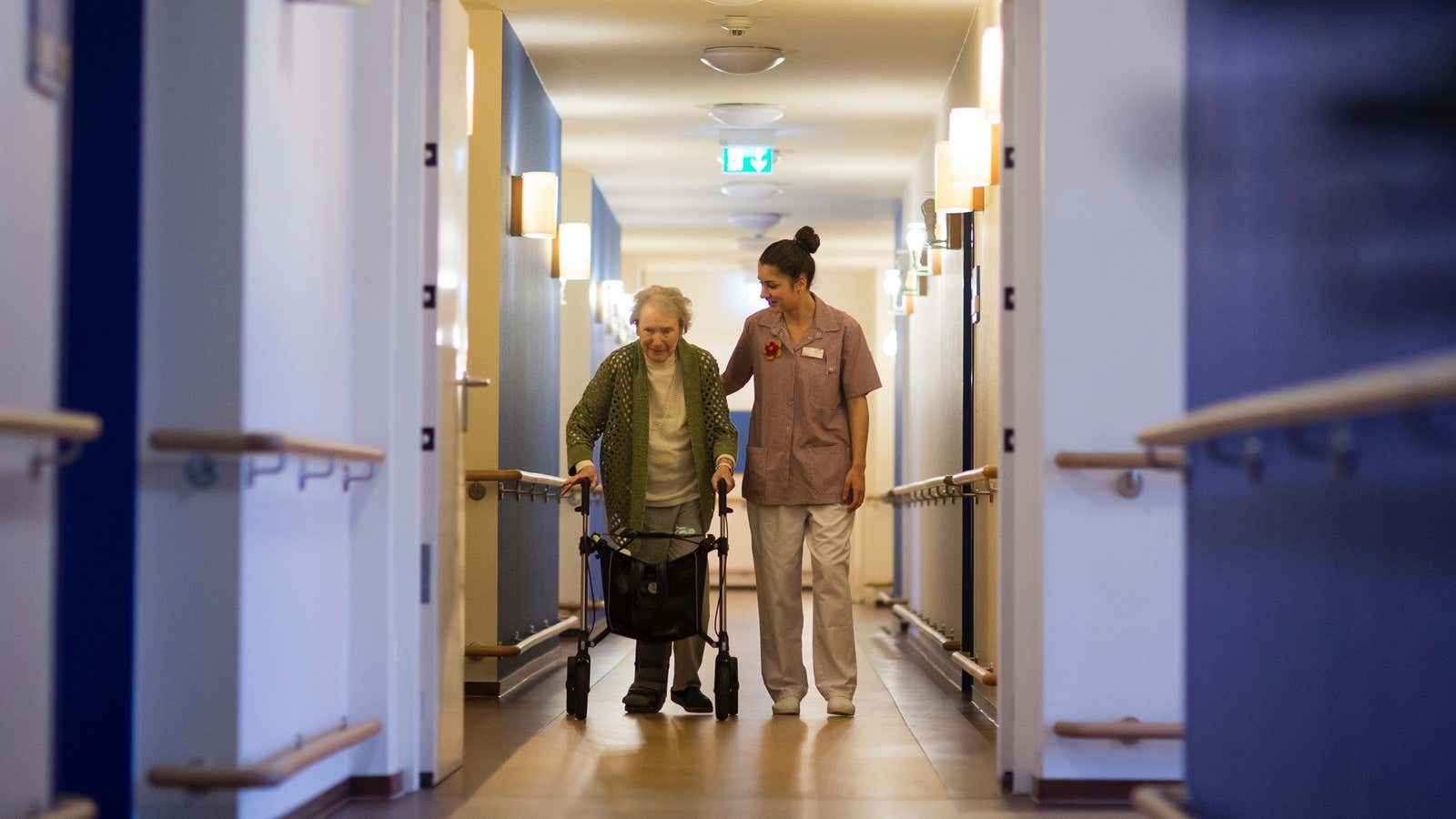What if you could stop accidents before they happened?
Researchers at the University of Missouri have developed sensor systems that allow health care professionals to remotely monitor senior citizens around the clock, accurately predicting their chances of falling.
“A fall or even a risk of falling often is the turning point that forces older adults out of their home. So it can have a huge impact on their independence and quality of life,” Marjorie Skubic, director of the university’s Center for Eldercare and Rehabilitation Technology, told Quartz in an email. The goal of the new devices is in part to immediately detect falls to get help as soon as possible, but the “real win,” says Skubic, would be preventing the fall in the first place.
Skubic’s team mounted depth sensors on walls throughout senior citizens’ living quarters in a retirement home in Columbia, Missouri. The sensors enabled the researchers to detect subtle changes in their walking patterns, like increases in shakiness, which may otherwise go unnoticed. Those were then flagged to caretakers via email.
The results of the 10-year program were published in Western Journal of Nursing Research in July. The study found that the sensors enabled nurses to react more quickly to deviations from patterns, perform resident assessments more quickly, and suggest necessary treatment options sooner. Overall, “their research has found that by integrating care coordination and sensor technology at [the retirement home], residents are able to live independently on average of four years compared to the national average of 22 months,” according to a University of Missouri press release.
The motion sensors’ processors can generate data about gait speed and stride lengths. Results showed that a 5 cm per second decrease in gait speed was associated with an 86.3% probability of falling within the next three weeks compared with a 19.5% probability for those with no change. A 7.6 cm decline in stride length over seven days correlated with a 50.6% probability of falling versus a 11.4% probability for those with no change, researchers wrote.
The trackers are purposefully not made as wearables. Skubic says many older adults do not want to be bothered with wearing sensors, and many can’t remember to charge and use them consistently.
Previously, the same researchers tested other forms of non-intrusive trackers to monitor health problems. For instance, a hydraulic sensor attached under a person’s mattress can track heart and breathing rates. If regular patterns are broken—say, someone visits the bathroom more frequently at night—it can signal early signs of urinary tract infection. If not contained in time, UTI can lead to sepsis or even death in the elderly.
Remote sensors can curb a range of health problems while they are still “small and manageable,” says Skubic. Feasibly, anyone with a chronic condition could use the sensors to better track and manage their health. Health-tech company Foresite Healthcare is now producing these sensors for use in hospitals, and the University of Missouri team says that in the future, they could also be sold for use in private homes.
